Nothing beats a hearty, homemade beef stew, and our Old Fashioned Beef Stew takes it to the next level. This recipe uses a two-step cornstarch process to achieve the perfect thickness. The real magic, though, is in the flavor – a balanced blend of allspice, paprika, and Worcestershire sauce creates a depth that sets this stew apart from more basic versions. The addition of pearl onions adds a little sweetness and the perfect little ball of flavor. texture you won’t find in many other recipes. It’s comfort food done right!
If you really want to treat yourself, make Homemade French Bread or Cornbread to serve on the side.
Why You’ll Love This Recipe
- This stew uses cornstarch in two stages to achieve just the right thickness.
- The combination of allspice, paprika, and Worcestershire sauce gives our stew the flavor that sets it apart from the rest!
- Pearl onions bring a touch of sweetness and texture that’s often missing from other recipes.
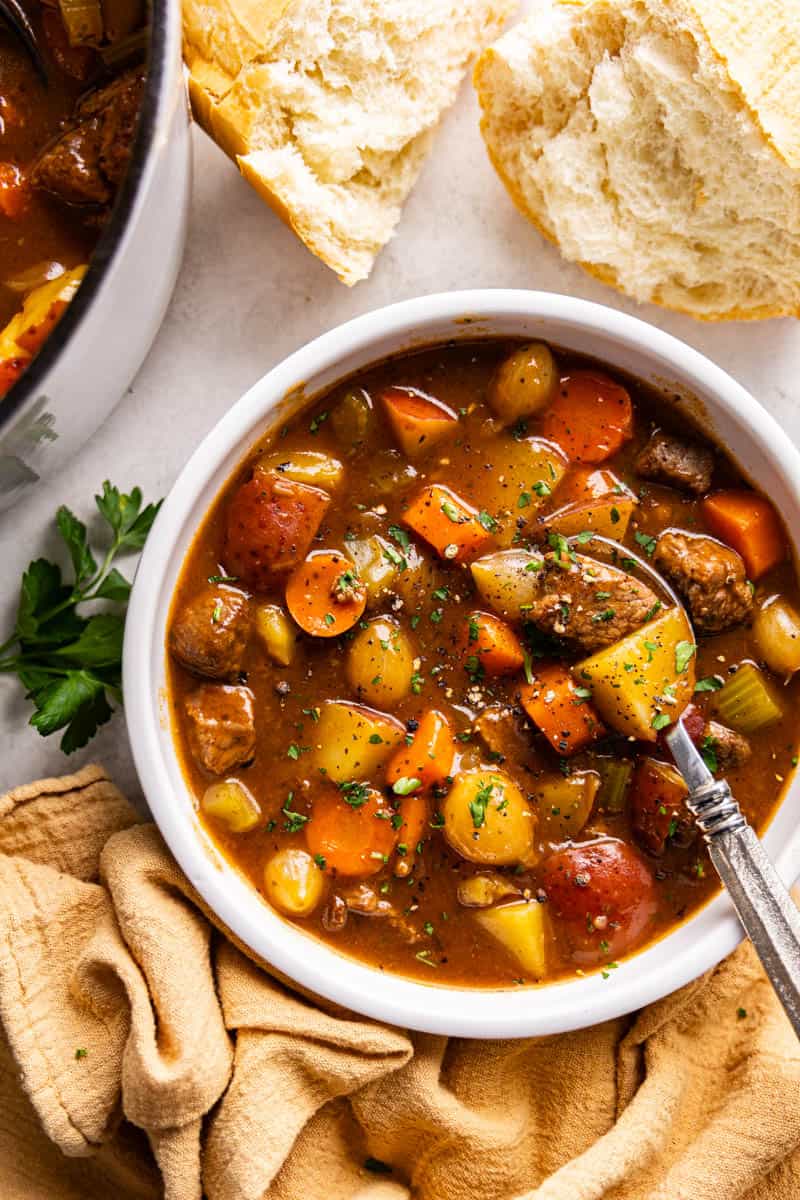
While the recipe may seem lengthy clocking in at 2 hours, most of the work is in the prep. Once you’ve chopped your vegetables, it’s simply a matter of simmering everything until it’s melt-in-your-mouth tender. This stew is the best for any time you need good, hearty, and comforting food that revives you.
Ingredient Notes
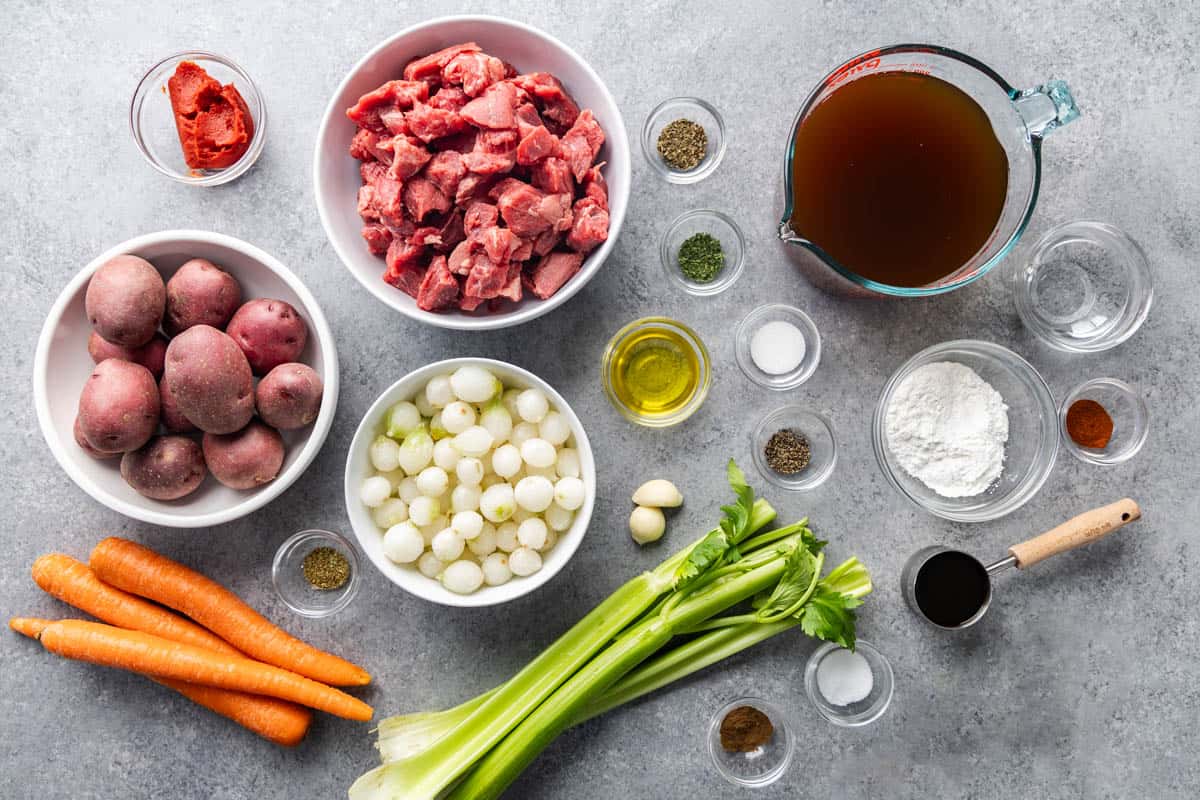
Beef Stew Meat: If you can’t find pre-cut stew meat, simply purchase a whole chuck roast and cut it into 1- to 2-inch cubes yourself.
Cornstarch: Divided and used in two stages—first to coat the beef for browning, then as a thickener at the end.
Olive Oil: You can substitute it with any neutral cooking oil like vegetable or canola oil.
Garlic: Fresh minced for the best flavor.
Beef Broth: Use a good-quality, low-sodium beef broth for the base of your stew.
Red Potatoes: These are ideal because they hold their shape well when cooked. If unavailable, Yukon Gold potatoes are a great alternative. Avoid using russet potatoes, as they tend to break apart in stews.
Pearl Onions: You can find them in the frozen vegetable section. If you can’t find them, substitute them with roughly chopped white or yellow onion.
Carrots: Baby carrots can work too, though you’ll want to cut them into smaller pieces.
Granulated Sugar: Just a touch of sugar balances out the acidity.
Allspice: This is its own spice that comes from a berry, it’s not a mixture of other spices. It adds a warm note which is really the secret here.
Stew Meat
Most grocery stores offer stew meat which is already cut, near the butcher department. Stew meat is usually just a cubed chuck roast. You can also opt to cut your own or for a leaner cut like a diced round. Those work too—basically, any meat that can be used as a pot roast will work including chuck roast, bottom round, top round, and brisket.
Pearl Onions
We cannot get enough of the bite of flavor that a pearl onion adds to beef stew. Fresh pearl onions are seasonal, but you can always find them in the frozen section at your local grocery store, which we prefer anyway. They have a nice, mild flavor, are already peeled, and are ready to add, whole, into this stew. If you can’t find these little gems, a regular chopped white or yellow onion would also work, but it won’t have the same pizazz as a beef stew made with pearl onions.
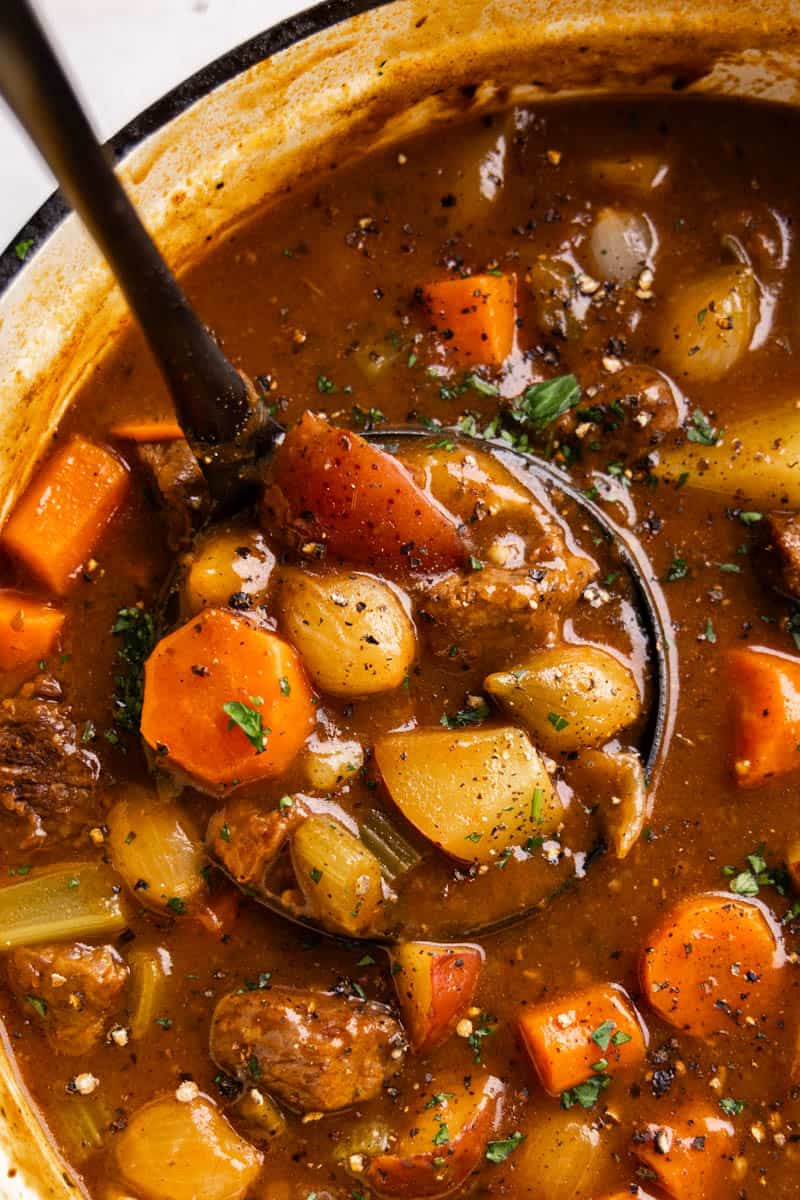
Cornstarch Slurry
A slurry is a mixture that is made of a liquid and cornstarch, used to thicken soups and stews. They are most commonly made by whisking water, beef broth, or another liquid together with the cornstarch, before adding it to a soup, stew or dish that requires thickening. Much like a roux that is used to thicken gravy or soup, a slurry is made and then gradually added to the dish. The reason you don’t want to add cornstarch directly to a dish or pot, is because it won’t incorporate properly and clumps will form. The water or liquid ushers the cornstarch into the fluid gradually enough for it to incorporate before it clumps.
Storage & Reheating Instructions
Cool the stew to room temperature before transferring it to containers for storage.
Refrigerate in an airtight container for 3 to 4 days. Reheat on the stove over medium heat, adding a little water or broth if necessary to adjust consistency.
To freeze, transfer to an airtight freezer container or a resealable freezer bag. Remove as much air as possible and freeze for up to 3 months.
More delicious stew recipes…
Comforting Irish Stew
3 hrs 15 mins
Old Fashioned Chicken Stew
1 hr 5 mins
Instant Pot Beef Stew
1 hr 50 mins
Slow Cooker Irish Stew
6 hrs 15 mins
Watch the video below where Rachel will walk you through every step of this recipe. Sometimes it helps to have a visual, and we’ve always got you covered with our cooking show. You can find the complete collection of recipes on YouTube, Facebook Watch, or our Facebook Page, or right here on our website with their corresponding recipes.

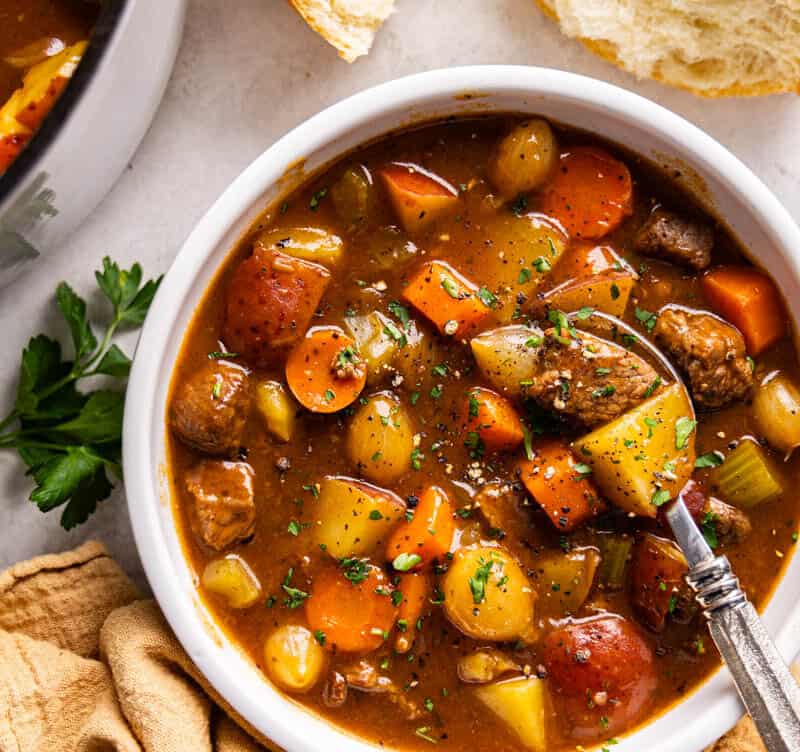
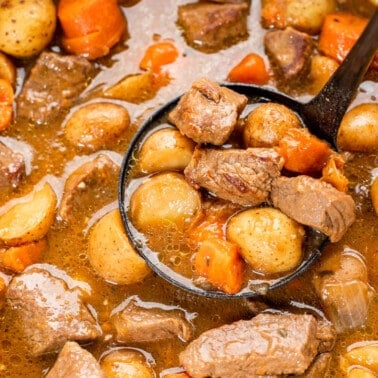
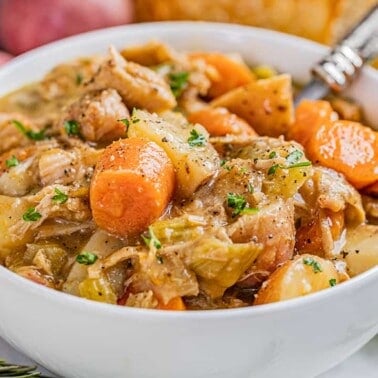
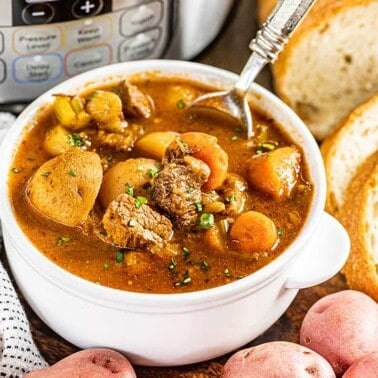
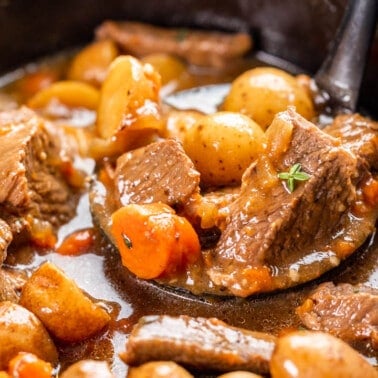
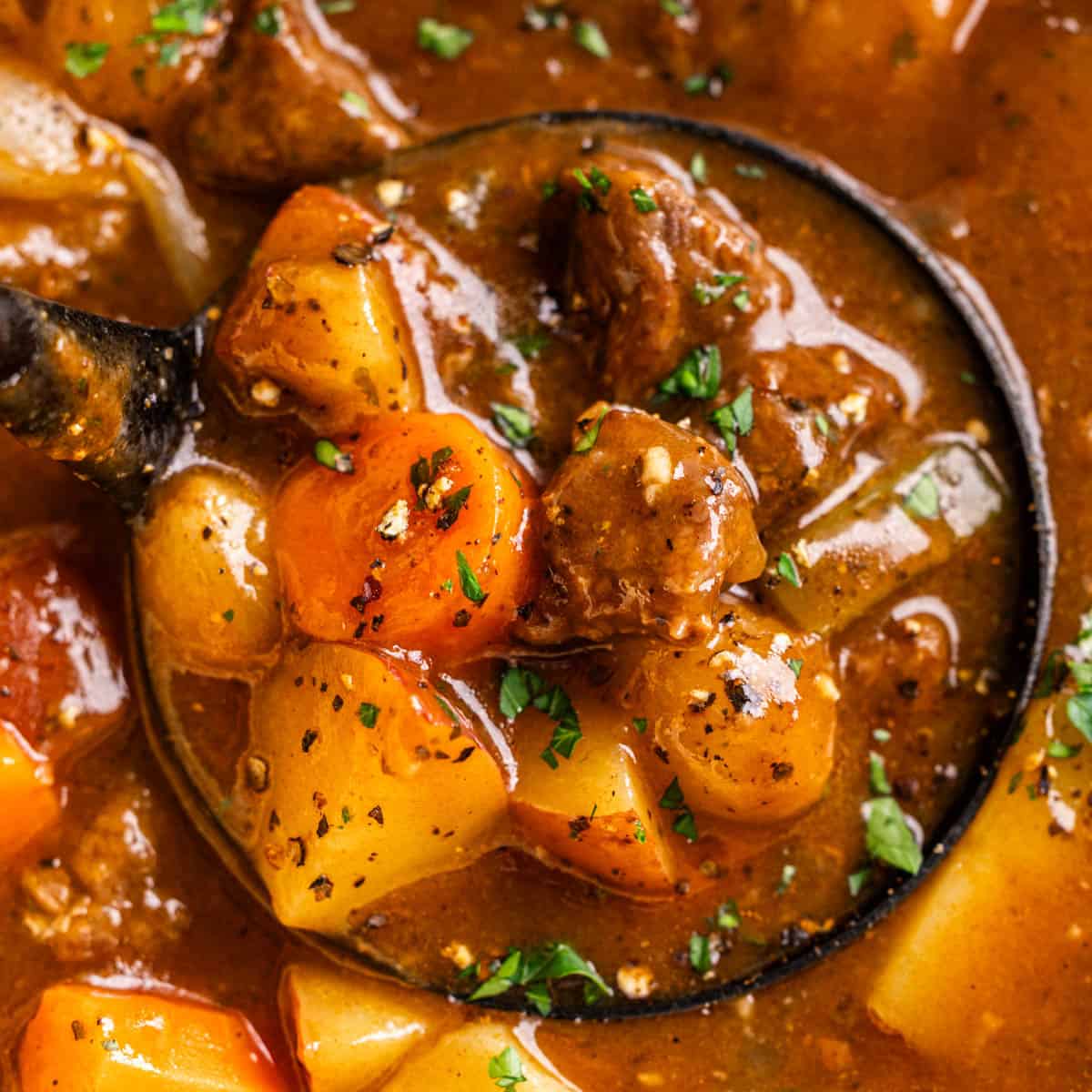
Made this recipe, and my family really loved it. I will rate this dish a five star. Thanks to the stay at home chef, my family are asking when will I be making ” that stew again”.
This was excellent! It made a lot of gravy which is fine but next time I’ll cut back the beef broth to 3 cups. I also used smoked paprika instead of regular paprika and cooked it for 3 hours for more tender beef.
I’m not usually a fan of beef stew but after reading the recipe I decided to make it so incredibly glad I did. The broth is like nothing you ever tasted before.
Best ever!
I’ve been making beef stew for years and this one was soooooo good. My family of three finished almost the whole pot in one sitting.
I did make a few tweaks out of necessity and old habits.
Added a can of Campbell’s French Onion soup to make up for shortage of beef broth and because I like a dark gravy, I always add a tablespoon or two of Gravy Master
Thanks again, Rachel, for making me look like a good cook!
Great recipes! I enjoy making everything, as they always are great!! Family and friends are enjoying all these meals!! They think I am a great cook!! Thank you!
So full of flavor. Love it!
This is absolutely the best beef stew tasted just like my grandmother’s thank you so much I used the slow cooker method
D e l i s h!!!
This is the best beef stew recipe! I normally cook it in the crock pot. I don’t have time to do that today. Can this be made in an instant pot? How long to cook?
Another great recipe from you Rachel
Quick & Easy
I shared this with my daughter and her family and of course my husband,it was a great hit !!
Thank you for the great job you are doing,love all your recipes,they are my go to ones